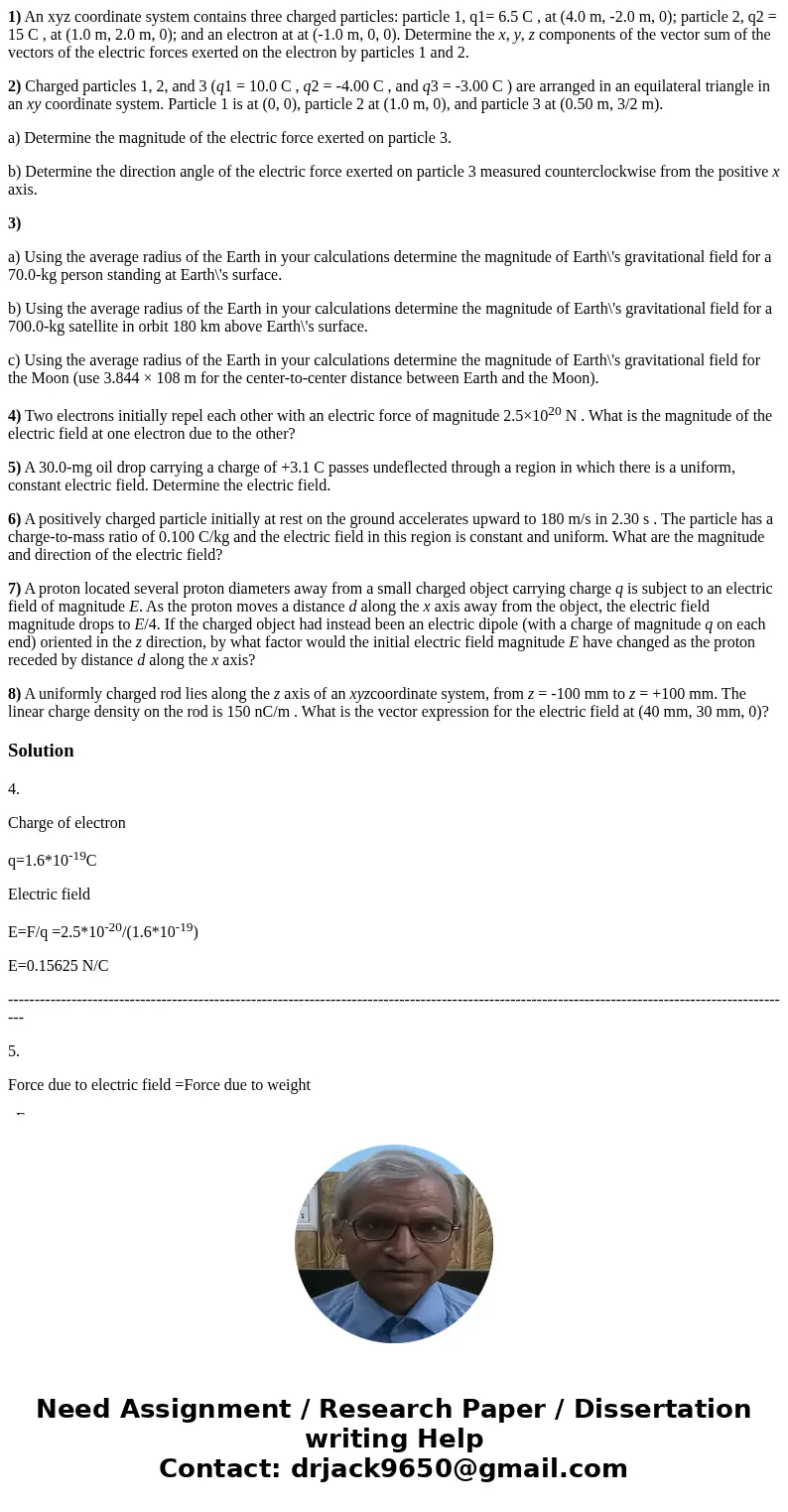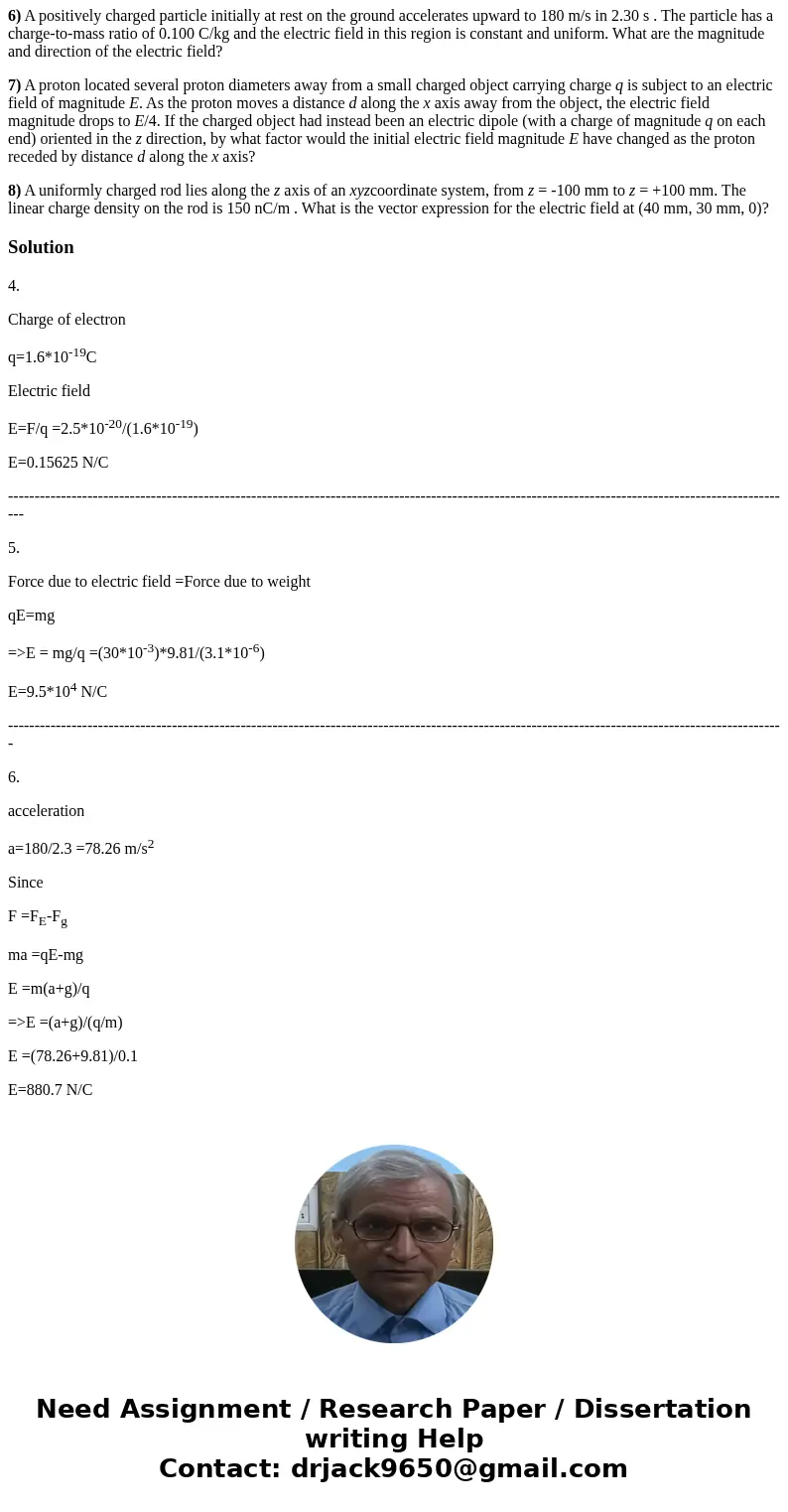1 An xyz coordinate system contains three charged particles
1) An xyz coordinate system contains three charged particles: particle 1, q1= 6.5 C , at (4.0 m, -2.0 m, 0); particle 2, q2 = 15 C , at (1.0 m, 2.0 m, 0); and an electron at at (-1.0 m, 0, 0). Determine the x, y, z components of the vector sum of the vectors of the electric forces exerted on the electron by particles 1 and 2.
2) Charged particles 1, 2, and 3 (q1 = 10.0 C , q2 = -4.00 C , and q3 = -3.00 C ) are arranged in an equilateral triangle in an xy coordinate system. Particle 1 is at (0, 0), particle 2 at (1.0 m, 0), and particle 3 at (0.50 m, 3/2 m).
a) Determine the magnitude of the electric force exerted on particle 3.
b) Determine the direction angle of the electric force exerted on particle 3 measured counterclockwise from the positive x axis.
3)
a) Using the average radius of the Earth in your calculations determine the magnitude of Earth\'s gravitational field for a 70.0-kg person standing at Earth\'s surface.
b) Using the average radius of the Earth in your calculations determine the magnitude of Earth\'s gravitational field for a 700.0-kg satellite in orbit 180 km above Earth\'s surface.
c) Using the average radius of the Earth in your calculations determine the magnitude of Earth\'s gravitational field for the Moon (use 3.844 × 108 m for the center-to-center distance between Earth and the Moon).
4) Two electrons initially repel each other with an electric force of magnitude 2.5×1020 N . What is the magnitude of the electric field at one electron due to the other?
5) A 30.0-mg oil drop carrying a charge of +3.1 C passes undeflected through a region in which there is a uniform, constant electric field. Determine the electric field.
6) A positively charged particle initially at rest on the ground accelerates upward to 180 m/s in 2.30 s . The particle has a charge-to-mass ratio of 0.100 C/kg and the electric field in this region is constant and uniform. What are the magnitude and direction of the electric field?
7) A proton located several proton diameters away from a small charged object carrying charge q is subject to an electric field of magnitude E. As the proton moves a distance d along the x axis away from the object, the electric field magnitude drops to E/4. If the charged object had instead been an electric dipole (with a charge of magnitude q on each end) oriented in the z direction, by what factor would the initial electric field magnitude E have changed as the proton receded by distance d along the x axis?
8) A uniformly charged rod lies along the z axis of an xyzcoordinate system, from z = -100 mm to z = +100 mm. The linear charge density on the rod is 150 nC/m . What is the vector expression for the electric field at (40 mm, 30 mm, 0)?
Solution
4.
Charge of electron
q=1.6*10-19C
Electric field
E=F/q =2.5*10-20/(1.6*10-19)
E=0.15625 N/C
-----------------------------------------------------------------------------------------------------------------------------------------------------
5.
Force due to electric field =Force due to weight
qE=mg
=>E = mg/q =(30*10-3)*9.81/(3.1*10-6)
E=9.5*104 N/C
---------------------------------------------------------------------------------------------------------------------------------------------------
6.
acceleration
a=180/2.3 =78.26 m/s2
Since
F =FE-Fg
ma =qE-mg
E =m(a+g)/q
=>E =(a+g)/(q/m)
E =(78.26+9.81)/0.1
E=880.7 N/C


 Homework Sourse
Homework Sourse